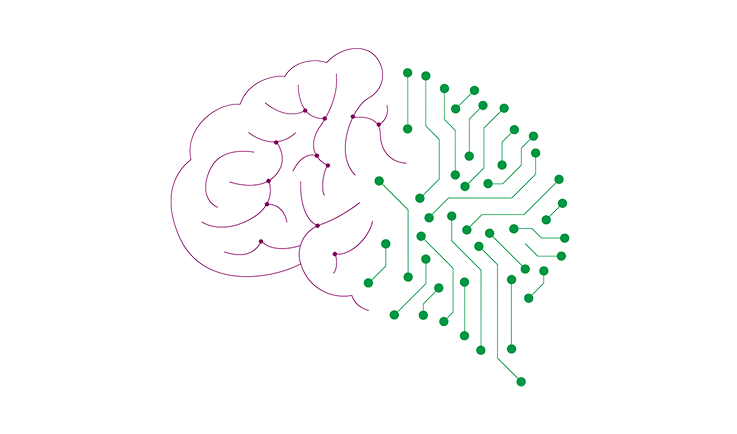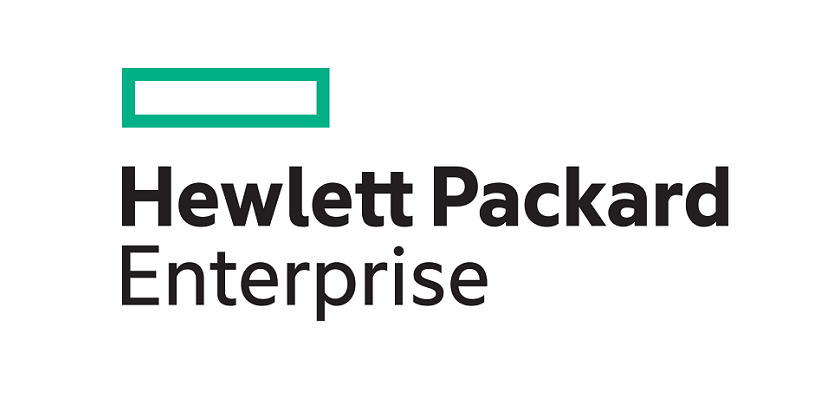The next BriefingsDirect Voice of AI Innovation podcast explores how businesses and IT strategists are planning their path to a new normal throughout the COVID-19 pandemic and recovery.
By leveraging the latest tools and gaining data-driven inferences, architects and analysts are effectively managing the pandemic response — and giving more people better ways to improve their path to the new normal. Artificial intelligence (AI) and data science are proving increasingly impactful and indispensable.
Stay with us as we examine how AI forms the indispensable pandemic response team member for helping businesses reduce risk of failure and innovate with confidence. To learn more about the analytics, solutions, and methods that support advantageous reactivity — amid unprecedented change — we are joined by two experts.
Listen to the podcast. Find it on iTunes. Read a full transcript or download a copy.
Please welcome Arti Garg, Head of Advanced AI Solutions and Technologies, at Hewlett Packard Enterprise (HPE), and Glyn Bowden, Chief Technologist for AI and Data, at HPE Pointnext Services. The discussion is moderated by Dana Gardner, Principal Analyst at Interarbor Solutions.
Here are some excerpts:
Gardner: We’re in uncharted waters in dealing with the complexities of the novel coronavirus pandemic. Arti, why should we look to data science and AI to help when there’s not much of a historical record to rely on?
Garg: Because we don’t have a historical record, I think data science and AI are proving to be particularly useful right now in understanding this new disease and how we might potentially better treat it, manage it, and find a vaccine for it. And that’s because at this moment in time, raw data that are being collected from medical offices and through research labs are the foundation of what we know about the pandemic.
This is an interesting time because, when you know a disease, medical studies and medical research are often conducted in a very controlled way. You try to control the environment in which you gather data, but unfortunately, right now, we can’t do that. We don’t have the time to wait.
And so instead, AI — particularly some of the more advanced AI techniques — can be helpful in dealing with unstructured data or data of multiple different formats. It’s therefore becoming very important in the medical research community to use AI to better understand the disease. It’s enabling some unexpected and very fruitful collaborations, from what I’ve seen.
Gardner: Glyn, do you also see AI delivering more, even though we’re in uncharted waters?
Bowden: The benefits of something like machine learning (ML), for example, which is a subset of AI, is very good at handling many, many features. So with a human being approaching these projects, there are only so many things you can keep in your head at once in terms of the variables you need to consider when building a model to understand something.
But when you apply ML, you are able to cope with millions or billions of features simultaneously — and then simulate models using that information. So it really does add the power of a million scientists to the same problem we were trying to face alone before.
Gardner: And is this AI benefit something that we can apply in many different avenues? Are we also modeling better planning around operations, or is this more research and development? Is it both?
Data scientists are collaborating directly with medical science researchers and learning how to incorporate subject matter expertise into data science models.
Garg: There are two ways to answer the question of what’s happening with the use of AI in response to the pandemic. One is actually to the practice of data science itself.
One is, right now data scientists are collaborating directly with medical science research and learning how to incorporate subject matter expertise into data science models. This has been one of the challenges preventing businesses from adopting AI in more complex applications. But now we’re developing some of the best-practices that will help us use AI in a lot of domains.
In addition, businesses are considering the use of AI to help them manage their businesses and operations going forward. That includes things such as using computer vision (CV) to ensure that social distancing happens with their workforce, or other types of compliance we might be asked to do in the future.
Gardner: Are the pressures of the current environment allowing AI and data science benefits to impact more people? We’ve been talking about the democratization of AI for some time. Is this happening more now?
More data, opinions, options
Bowden: Absolutely, and that’s both a positive and a negative. The data around the pandemic has been made available to the general public. Anyone looking at news sites or newspapers and consuming information from public channels — accessing the disease incidence reports from Johns Hopkins University, for example — we have a steady stream of it. But those data sources are all over the place and are being thrown to a public that is only just now becoming data-savvy and data-literate.
As they consume this information, add their context, and get a personal point of view, that is then pushed back into the community again — because as you get data-centric you want to share it.
So we have a wide public feed — not only from universities and scholars, but from the general public, who are now acting as public data scientists. I think that’s creating a huge movement.
Garg: I agree. Making such data available exposes pretty much anyone to these amazing data portals, like Johns Hopkins University has made available. This is great because it allows a lot of people to participate.
It can also be a challenge because, as I mentioned, when you’re dealing with complex problems you need to be able to incorporate subject matter expertise into the models you’re building and in how you interpret the data you are analyzing.
And so, unfortunately, we’ve already seen some cases — blog posts or other types of analysis — that get a lot of attention in social media but are later found to be not taking into account things that people who had spent their careers studying epidemiology, for example, might know and understand.
Gardner: Recently, I’ve seen articles where people now are calling this a misinformation pandemic. Yet businesses and governments need good, hard inference information and data to operate responsibly, to make the best decisions, and to reduce risk.
What obstacles should people overcome to make data science and AI useful and integral in a crisis situation?
Garg: One of the things that’s underappreciated is that a foundation, a data platform, makes data managed and accessible so you can contextualize and make stronger decisions based on it. That’s going to be critical. It’s always critical in leveraging data to make better decisions. And it can mean a larger investment than people might expect, but it really pays off if you want to be a data-driven organization.
Know where data comes from
Bowden: There are a plethora of obstacles. The kind that Arti is referring to, and that is being made more obvious in the pandemic, is the way we don’t focus on the provenance of the data. So, where does the data come from? That doesn’t always get examined, and as we were talking about a second ago, the context might not be there.
All of that can be gleaned from knowing the source of the data. The source of the data tends to come from the metadata that surrounds it. So the metadata is the data that describes the data. It could be about when the data was generated, who generated it, what it was generated for, and who the intended consumer is. All of that could be part of the metadata.
Organizations need to look at these data sources because that’s ultimately how you determine the trustworthiness and value of that data.
We don’t focus on the provenance of the data. Where does the data come from? That doesn’t always get examined and he context might not be there.
Now it could be that you are taking data from external sources to aggregate with internal sources. And so the data platform piece that Arti was referring to applies to properly bringing those data pieces together. It shouldn’t just be you running data silos and treating them as you always treated them. It’s about aggregation of those data pieces. But you need to be able to trust those sources in order to be able to bring them together in a meaningful way.
So understanding the provenance of the data, understanding where it came from or where it was produced — that’s key to knowing how to bring it together in that data platform.
Gardner: Along the lines of necessity being the mother of invention, it seems to me that a crisis is also an opportunity to change culture in ways that are difficult otherwise. Are we seeing accelerants given the current environment to the use of AI and data?
AI adoption on the rise
Garg: I will answer that question from two different perspectives. One is certainly the research community. Many medical researchers, for example, are doing a lot of work that is becoming more prominent in people’s eyes right now.
I can tell you from working with researchers in this community and knowing many of them, that the medical research community has been interested and excited to adopt advanced AI techniques, big data techniques, into their research.
It’s not that they are doing it for the first time, but definitely I see an acceleration of the desire and necessity to make use of non-traditional techniques for analyzing their data. I think it’s unlikely that they are going to go back to not using those for other types of studies as well.
In addition, you are definitely going to see AI utilized and become part of our new normal in the future, if you will. We are already hearing from customers and vendors about wanting to use things such as CV to monitor social distancing in places like airports where thermal scanning might already be used. We’re also seeing more interest in using that in retail.
So some AI solutions will become a common part of our day-to-day lives.
Gardner: Glyn, a more receptive environment to AI now?
Bowden: I think so, yes. The general public are particularly becoming used to AI playing a huge role. The mystery around it is beginning to fade and it is becoming far more accepted that AI is something that can be trusted.
It does have its limitations. It’s not going to turn into Terminator and take over the world.
The fact that we are seeing AI more in our day-to-day lives means people are beginning to depend on the results of AI, at least from the understanding of the pandemic, but that drives that exception.
The general public are particularly becoming used to AI playing a huge role. The mystery around it is beginning to fade and it is becoming far more accepted that AI is something that can be trusted.
When you start looking at how it will enable people to get back to somewhat of a normal existence — to go to the store more often, to be able to start traveling again, and to be able to return to the office — there is that dependency that Arti mentioned around video analytics to ensure social distancing or temperatures of people using thermal detection. All of that will allow people to move on with their lives and so AI will become more accepted.
I think AI softens the blow of what some people might see as a civil liberty being eroded. It softens the blow of that in ways and says, “This is the benefit already and this is as far as it goes.” So it at least forms discussions whenever it was formed before.
Garg: One of the really valuable things happening right now are how major news publications have been publishing amazing infographics, very informative, both in terms of the analysis that they provide of data and very specific things like how restaurants are recovering in areas that have stay-in-place orders.
In addition to providing nice visualizations of the data, some of the major news publications have been very responsible by providing captions and context. It’s very heartening in some cases to look at the comments sections associated with some of these infographics as the general public really starts to grapple with the benefits and limitations of AI, how to contextualize it and use it to make informed decisions while also recognizing that you can go too far and over-interpret the information.
Gardner: Speaking of informed decisions, to what degree you are seeing the C-suite — the top executives in many businesses — look to their dashboards and query datasets in new ways? Are we seeing data-driven innovation at the top of decision-making as well?
Data inspires C-suite innovation
Bowden: The C-suite is definitely taking a lot of notice of what’s happening in the sense that they are seeing how valuable the aggregation of data is and how it’s forwarding responses to things like this.
So they are beginning to look internally at what data sources are available within their own organizations. I am thinking now about how do we bring this together so we can get a better view of not only the tactical decisions that we have to make, but using the macro environmental data, and how do we now start making strategic decisions, and I think the value is being demonstrated for them in plain sight.
So rather than having to experiment, to see if there is going to be value, there is a full expectation that value will be delivered, and now the experiment is how much they can draw from this data now.
Garg: It’s a little early to see how much this is going change their decision-making, especially because frankly we are in a moment when a lot of the C-suite was already exploring AI and opening up to its possibilities in a way they hadn’t even a year ago.
And so there is an issue of timing here. It’s hard to know which is the cause and which is just a coincidence. But, for sure, to Glyn’s point, they are dealing with more change.
Gardner: For IT organizations, many of them are going to be facing some decisions about where to put their resources. They are going to be facing budget pressures. For IT to rise and provide the foundation needed to enable what we have been talking about in terms of AI in different sectors and in different ways, what should they be thinking about?
How can IT make sure they are accelerating the benefits of data science at a time when they need to be even more choosy about how they spend their dollars?
IT wields the sword to deliver DX
Bowden: With IT particularly, they have never had so much focus as right now, and probably budgets are responding in a similar way. This is because everyone has to now look at their digital strategy and their digital presence — and move as much as they can online to be able to be resistant to pandemics and at-risk situations that are like this.
So IT has to have the sword, if you like, in that battle. They have to fix the digital strategy. They have to deliver on that digital promise. And there is an immediate expectation of customers that things just will be available online.
With the pandemic, there is now an AI movement that will get driven purely from the fact that so much more commerce and business are going to be digitized. We need to enable that digital strategy.
If you look at students in universities, for example, they assume that it will be a very quick fix to start joining Zoom calls and to be able to meet that issue right away. Well, actually there is a much bigger infrastructure that has to sit behind those things in order to be able to enable that digital strategy.
So, there is now an AI movement that will get driven purely from the fact that so much more commerce and business is going to be digitized.
Gardner: Let’s look to some more examples and associated metrics. Where do you see AI and data science really shining? Are there some poster children, if you will, of how organizations — either named or unnamed — are putting AI and data science to use in the pandemic to mitigate the crisis or foster a new normal?
Garg: It’s hard to say how the different types of video analytics and CV techniques are going to facilitate reopening in a safe manner. But that’s what I have heard about the most at this time in terms of customers adopting AI.
In general, we are at very early stages of how an organization is going to decide to adopt AI. And so, for sure, the research community is scrambling to take advantage of this, but for organizations it’s going to take time to further adopt AI into any organization. If you do it right, it can be transformational. Yet transformational usually means that a lot of things need to change — not just the solution that you have deployed.
Bowden: There’s a plethora of examples from the medical side, such as how we have been able to do gene analysis, and those sorts of things, to understand the virus very quickly. That’s well-known and well-covered.
The bit that’s less well covered is AI supporting decision-making by governments, councils, and civil bodies. They are taking not only the data from how many people are getting sick and how many people are in hospital, which is very important to understand where the disease is but augmenting that with data from a socioeconomic situation. That means you can understand, for example, where an aging population might live or where a poor population might live because there’s less employment in that area.
The impact of what will happen to their jobs, what will happen if they lose transport links, and the impact if they lose access to healthcare — all of that is being better understood by the AI models.
As we focus on not just the health data but also the economic data and social data, we have a much better understanding of how society will react, which has been guiding the principles that the governments have been using to respond.
So when people look at the government and say, “Well, they have come out with one thing and now they are changing their minds,” that’s normally a data-driven decision and people aren’t necessarily seeing it that way.
So AI is playing a massive role in getting society to understand the impact of the virus — not just from a medical perspective, but from everything else and to help the people.
Gardner: Glyn, this might be more apparent to the Pointnext organization, but how is AI benefiting the operational services side? Service and support providers have been put under tremendous additional strain and demand, and enterprises are looking for efficiency and adaptability.
Are they pointing the AI focus at their IT systems? How does the data they use for running their own operations come to their aid? Is there an AIOps part to this story?
AI needs people, processes
Bowden: Absolutely, and there has definitely become a drive toward AIOps.
When you look at an operational organization within an IT group today, it’s surprising how much of it is still human-based. It’s a personal eyeball looking at a graph and then determining a trend from that graph. Or it’s the gut feeling that a storage administrator has when they know their system is getting full and they have an idea in the back of their head that last year something happened seasonally from within the organization making decisions that way.
We are therefore seeing systems such as HPE’s InfoSight start to be more prominent in the way people make those decisions. So that allows plugging into an ecosystem whereby you can see the trend of your systems over a long time, where you can use AI modeling as well as advanced analytics to understand the behavior of a system over time, and how the impact of things — like everybody is suddenly starting to work remotely – does to the systems from a data perspective.
So the models-to-be need to catch up in that sense as well. But absolutely, AIOps is desirable. If it’s not there today, it’s certainly something that people are pursuing a lot more aggressively than they were before the pandemic.
Gardner: As we look to the future, for those organizations that want to be more data-driven and do it quickly, any words of wisdom with 20/20 hindsight? How do you encourage enterprises — and small businesses as well — to better prepare themselves to use AI and data science?
Garg: Whenever I think about an organization adopting AI, it’s not just the AI solution itself but all of the organizational processes — and most importantly the people in an organization and preparing them for the adoption of AI.
I advise organizations that want to use AI and corporate data-driven decision-making to, first of all, make sure you are solving a really important problem for your organization. Sometimes the goal of adopting AI becomes more important than the goal of solving some kind of problem. So I always encourage any AI initiative to be focused on really high-value efforts.
Use your AI initiative to do something really valuable to your organization and spend a lot of time thinking about how to make it fit into the way your organization currently works. Make it enhance the day-to-day experience of your employees because, at the end of the day, your people are your most valuable assets.
Those are important non-technical things that are non-specific to the AI solution itself that organizations should think about if they want the shift to being AI-driven and data-driven to be successful.
For the AI itself, I suggest using the simplest-possible model, solution, and method of analyzing your data that you can. I cannot tell you the number of times where I have heard an organization come in saying that they want to use a very complex AI technique to solve a problem that if you look at it sideways you realize could be solved with a checklist or a simple spreadsheet. So the other rule of thumb with AI is to keep it as simple as possible. That will prevent you from incurring a lot of overhead.
Gardner: Glyn, how should organizations prepare to integrate data science and AI into more parts of their overall planning, management, and operations?
Bowden: You have to have a use case with an outcome in mind. It’s very important that you have a metric to determine whether it’s successful or not, and for the amount of value you add by bringing in AI. Because, as Arti said, a lot of these problems can be solved in multiple ways; AI isn’t the only way and often isn’t the best way. Just because it exists in that domain doesn’t necessarily mean it should be used.
AI isn’t an on/off switch; it’s an iteration. You can start with something small and then build into bigger and bigger components that bring more data to bear on the problem, and then add new features that lead to new functions and outcomes.
The second part is AI isn’t an on/off switch; it’s an iteration. You can start with something small and then build into bigger and bigger components that bring more and more data to bear on the problem, as well as then adding new features that lead to new functions and outcomes.
The other part of it is: AI is part of an ecosystem; it never exists in isolation. You don’t just drop in an AI system on its own and it solves a problem. You have to plug it into other existing systems around the business. It has data sources that feed it so that it can come to some decision.
Unless you think about what happens beyond that — whether it’s visualizing something to a human being who will make a decision or automating a decision – it could really just be hiring the smartest person you can find and locking them in a room.
Pandemic’s positive impact
Gardner: I would like to close out our discussion with a riff on the adage of, “You can bring a horse to water but you can’t make them drink.” And that means trust in the data outcomes and people who are thirsty for more analytics and who want to use it.
How can we look with reassurance at the pandemic as having a positive impact on AI in that people want more data-driven analytics and will trust it? How do we encourage the perception to use AI? How is this current environment impacting that?
Garg: The fact that so many people are checking the trackers of how the pandemic is spreading and learning through a lot of major news publications as they are doing a great job of explaining this. They are learning through the tracking to see how stay-in-place orders affect the spread of the disease in their community. You are seeing that already.
We are seeing growth and trust in how analyzing data can help make better decisions. As I mentioned earlier, this leads to a better understanding of the limitations of data and a willingness to engage with that data output as not just black or white types of things.
As Glyn mentioned, it’s an iterative process, understanding how to make sense of data and how to build models to interpret the information that’s locked in the data. And I think we are seeing that.
We are seeing a growing desire to not only view this as some kind of black box that sits in some data center — and I don’t even know where it is — that someone is going to program, and it’s going to give me a result that will affect me. For some people that might be a positive thing, but for other people it might be a scary thing.
People are now much more willing to engage with the complexities of data science. I think that’s generally a positive thing for people wanting to incorporate it in their lives more because it becomes familiar and less other, if you will.
Gardner: Glyn, perceptions of trust as an accelerant to the use of yet more analytics and more AI?
Bowden: The trust comes from the fact that so many different data sources are out there. So many different organizations have made the data available that there is a consistent view of where the data works and where it doesn’t. And that’s built up the capability of people to accept that not all models work the first time, that experimentation does happen, and it is an iterative approach that gets to the end goal.
I have worked with customers who, when they saw a first experiment fall flat because it didn’t quite hit the accuracy or targets they were looking for, they ended the experiment. Whereas now I think we are seeing in real time on a massive scale that it’s all about iteration. It doesn’t necessarily work the first time. You need to recalibrate, move on, and do refinement. You bring in new data sources to get the extra value.
What we are seeing throughout this pandemic is the more expertise and data science you throw in an instance, the much better the outcome at the end. It’s not about that first result. It’s about the direction of the results, and the upward trend of success.
Listen to the podcast. Find it on iTunes. Read a full transcript or download a copy. Sponsor: Hewlett Packard Enterprise.
You may also be interested in:
-
How IT modern operational services enables self-managing, self-healing, and self-optimizing
-
How HPE Pointnext Services ushers businesses to the new normal via an inclusive nine-step plan
-
As containers go mainstream, IT culture should pivot to end-to-end DevSecOps
-
AI-first approach to infrastructure design extends analytics to more high-value use cases
-
How Intility uses HPE Primera intelligent storage to move to 100 percent data uptime
-
As hybrid IT complexity ramps up, operators look to data-driven automation tools
-
How containers are the new basic currency for pay as you go hybrid IT
-
HPE strategist Mark Linesch on the surging role of containers in advancing the hybrid IT estate
-
HPE and PTC Join Forces to Deliver Best Outcomes from the OT-IT Productivity Revolution






















